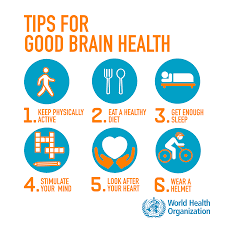Training with a friend, spouse, or co-worker provides accountability, motivation, and technical expertise. Couple workouts can be more fun and a great way to spend time together. For more information just visit Personal Trainer New Jersey.
For trainers, a couple’s training adds value to their sessions and helps build client retention. So, how can you best market this?

The shared experience of working out with a trainer for couples creates a bond that extends beyond the gym walls. They can motivate and support each other as they work together to achieve their fitness goals. This is a great way to strengthen your relationship, especially if you spend much time apart due to work or family commitments.
Training couples provides fun and competition while motivating each other to push harder. This adds camaraderie and enjoyment to the workout, making it something you look forward to rather than dread. In addition, exercising with a partner can help you stay accountable to your training program by making it less likely that you will skip workouts or find an excuse to get out of a session.
Studies 2a and 2b replicated the findings of Study 1 using a larger sample size. Both studies found that participants are highly motivated to engage in shared experiences, even when the payoff is identical to undergoing the experience alone. The results from both studies also show that participants rate the enjoyment of the shared experience higher than the enjoyment of the solo experience.
When training couples, it is important to be upfront with the clients and explain that the goal of the exercise is to reach their fitness goals together. It is also helpful to tell them that if the exercise becomes too competitive and begins to impact their relationship negatively, you will advise them to train separately. Having these conversations early on can set expectations for your clients and avoid surprises. If you’re passionate about helping people take charge of their health and fitness, consider turning your passion into a career by becoming a personal trainer. Obtaining a personal training certification is an excellent way to learn exercise science, program design, and more to make your dream career a reality! Get started today with ISSA’s online personal training course. Upon completing the final exam, you will be on your way to earning an income by transforming lives through fitness!
Working out as a couple is more than just fun and motivating. Having a partner encourages people to push themselves more in training sessions, which can help them reach their fitness goals faster. Moreover, people tend to stick with their workouts and exercise programs more regularly when they have a trainer or gym buddy to hold them accountable.
This is especially true if the trainer and client have a close relationship. Building trust and rapport with your clients will make it easier for them to open up about their struggles in the gym. As a personal trainer, you can provide support by giving honest feedback on their form and technique. This can inspire them to keep trying, even when they feel like quitting.
In addition, the accountability factor of having a trainer for couples helps keep them on track with their workouts and other fitness-related activities. If one is tempted to slack off or skip a session, they know they will let their workout partner down. It’s much harder to let someone down than it is to yourself.
A trainer for couples can offer a variety of exercises that work well for varying fitness levels and health goals. For example, couples training for weight loss can do activities targeting core and glute muscles. Conversely, a trainer can curate workouts to increase strength and endurance for couples preparing to build muscle.
Another way that trainers can motivate couples to get healthy is by offering discounts on a block of training sessions. They can use the discounted price to attract more people and make their services more appealing while keeping costs low. However, this practice is best done carefully to not undervalue the service or overcharge for it.
If you want to start a career as a personal trainer, ISSA’s Personal Training Certification can teach you everything you need to know to help your clients take charge of their health and fitness. You can learn to be a personal trainer online from the comfort of your home, making it a great option for those already married or with children at home.
If you are a personal trainer, you know how important it is to motivate clients. If your client is more motivated than you’d like, it can be easy to lose their attention or for them to slack off and skip a workout. Training with a partner, however, provides extra accountability. If one of the partners decides to cut their session, they are letting two people down. That means they are likelier to stick to their program and get back on track.
As a trainer, you can create this accountability by focusing on your clients’ strengths. Ideally, you want to train couples who have similar fitness levels so they can be challenged equally. You can also encourage healthy competition by ensuring each team works out at their level and creating a fun environment for them to exercise.
In addition, you can increase your clients’ accountability by encouraging them to check in with each other. This can be done online or in person. For example, create a private social media page for your clients to hold each other accountable for their fitness journeys and support each other. You can then check in with the group often and ensure everyone is on track for their goals.
You can also encourage your clients to exercise together by providing them with workout equipment and exercises suitable for their fitness levels. This will allow them to work together and bond beyond the gym walls. It will also help them feel comfortable around each other, which is great for those nervous about working out in front of strangers. The bond created between the clients can motivate them to work harder and reach their fitness goals. This can be a very effective way to help convert those hesitant to try out personal training on a 1-2-1 basis. It is also a fantastic way to boost your PT income.
The shared experience of working with a personal trainer for couples can add some fun to their workouts. Teams may compete against each other in friendly challenges or encourage one another to keep going during tough sessions. This can make their training more enjoyable, motivating them to train regularly and reach their fitness goals.
If you are a new personal trainer, offering couples sessions might be a great way to attract clients who would otherwise shy away from your service due to its cost. The price for a session tailored to two people will cut in half whatever you charge per person, which is much more attractive than paying hundreds of pounds for individual training.
Another way to appeal to clients with your couples training is by promoting it via social media and email newsletters. This can help you establish a strong connection with potential clients and build trust, leading to them booking a few sessions and turning into long-term customers.
As with any marketing, focusing on your ideal client and how you can best help them is important. For example, if you are a personal trainer specializing in weight loss, you can promote your services to young couples interested in working with you as a team.
Another great way to get your name out there is by participating in health and fitness-related events or meetups in your local area. This is a good way to get to know your community and start building connections with those who might be interested in your services, which can help you turn one-off sessions into regular clients. In addition, you can also submit yourself to a personal trainer directory online, which will increase your exposure and allow people looking for a trainer in their area to find you. This is especially useful for those who are just starting and need guidance to help them get started.


